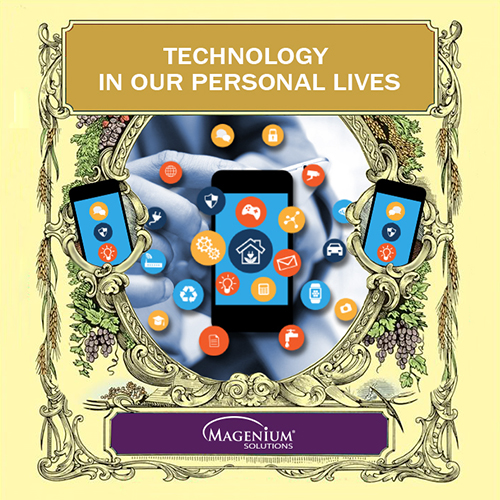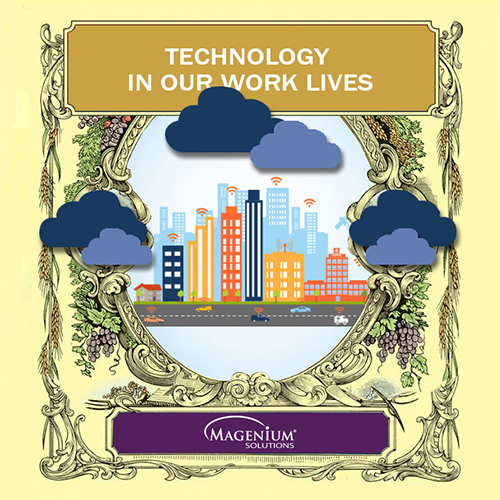The 2016 2017 Magenium Technology Almanac
If you’ve ever read the Farmer’s Almanac, you know it’s an interesting mix of historical record and predictions for the year ahead. While we’re not exactly farmers, we thought we’d do the same thing but for technology.
If you’ve ever read the Farmer’s Almanac, you know it’s an interesting mix of historical record and predictions for the year ahead. While we’re not exactly farmers, we thought we’d do the same thing but for technology. What a year 2016 was – but 2017 is looking even more interesting. Let’s break this down into 3 sections: how tech in 2016 impacted our personal lives, our work lives, and what 2017 might bring.
Ready? Go.

Mobile is no longer just a good option for most of us; in fact it’s our preferred choice. In November we learned that Internet usage by mobile and tablet devices surpassed desktop usage for the first time ever. We’ve always loved our smartphone, but now we know just how much we really do with them. In some places, mobile is the only computing device in the household!
After many years of promise, virtual reality also appears to have finally arrived. Call us biased, but we were blown away by the Microsoft HoloLens. Check out the demo here:
The impact virtual reality had in 2016 was limited, but it was the first time real devices could be purchased by consumers from multiple vendors. It will forever change entertainment, gaming, computing, and even how we work. It’s early, but it’s here and it’s exciting!
IoT. The “Internet of Things.” If you’re not familiar, it simply means devices that connect to and communicate with the Internet. Think of how many things you can now buy that are “smart.” Doorbells. Refrigerators. Lightbulbs. Thermostats. Almost anything in your home that runs on electricity can now be controlled by your smart phone or scheduled using a web browser. Take a look here as Microsoft's CEO Satya Nadella gives some perspective:
With IoT gradually taking over, imagine what our next steps are. With all of these devices collecting and reporting data, we will know more about consumption patterns, data requirements, and what people really care about, vs. what they say they care about. And everything will be customized to those tastes.

Windows 10. It’s now installed on over 400 million devices and got there 7 months sooner than the excellent Windows 7. But how does it impact your work life? If it hasn’t yet, it soon will. For starters, it will be the only OS available to OEMs very soon, which means if your organization doesn’t have a plan for deploying Windows 10 it needs to develop one soon. Don’t worry, we can help you with that. Just contact us.
The Cloud keeps rising. Did you know Morgan Stanley predicts Microsoft cloud products will be 30% of their revenue by 2018? That’s $25B – for just one company. The cloud computing market at large is predicted to be $141B by 2019. The cloud has taken hold at organizations large and small for many reasons. It’s affordable, easy to deploy, and reduces risk. Here's a great example of how Microsoft Azure's cloud computing impacts manufacturing firms.
We’ve successfully helped over a hundred organizations to bring cloud computing strategy to their day to day operations. Companies are now bulletproofing many of their mission-critical applications by migrating them to the cloud. Power outage in Chicago? Hurricane in Miami? It no longer matters because the app lives in 5 places at once.

We’ll revisit this one in a year to see how right or wrong we were. The obvious thing is to follow the trends and say they’ll continue. Cloud computing? Yup, it’ll keep growing. Mobile usage will still be high? Come on, of course. We’re interested in things that are juuuuust a little bit outside of being adopted mainstream.
Artificial Intelligence. Yes, it was a somewhat campy movie in 2001. But what’s really interesting is that it’s finally really real. Did you know Microsoft has over 5,000 people working on it right now? AI can provide personal digital assistants, smarter applications, and services that know what you’ll need before you even request it. It can predict weather patterns. It can divert traffic before it becomes a problem. It can even identify which of your customers are most likely to purchase additional goods and services from you. And it’s coming FAST.
Smart cities. Yes, it was gaining some momentum in 2016. But the explosion of information and the availability to it that cities are providing is what’s really starting to change. Your city, village, township, whatever you may call it – is likely looking right now at how they can hold themselves accountable to their constituents.
Cloud computing will dominate. I know, it's been coming on strong for the last 8-9 years. But it’s not stopping; only accelerating. Companies simply don’t want to maintain server farms anymore. Cooling, electricity, security, and the manpower to maintain it are all expensive. For most business applications you can now offload those concerns to someone else, and just pay a simple monthly fee.
So what do you think? Send us your thoughts on Twitter, Facebook or LinkedIn. Or you can ask us how we can make any of these things real for you, today.
